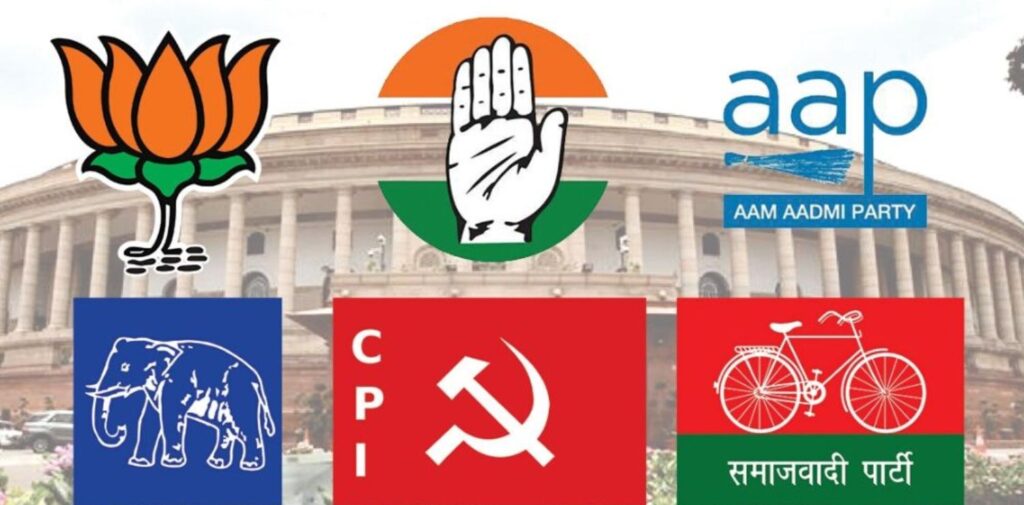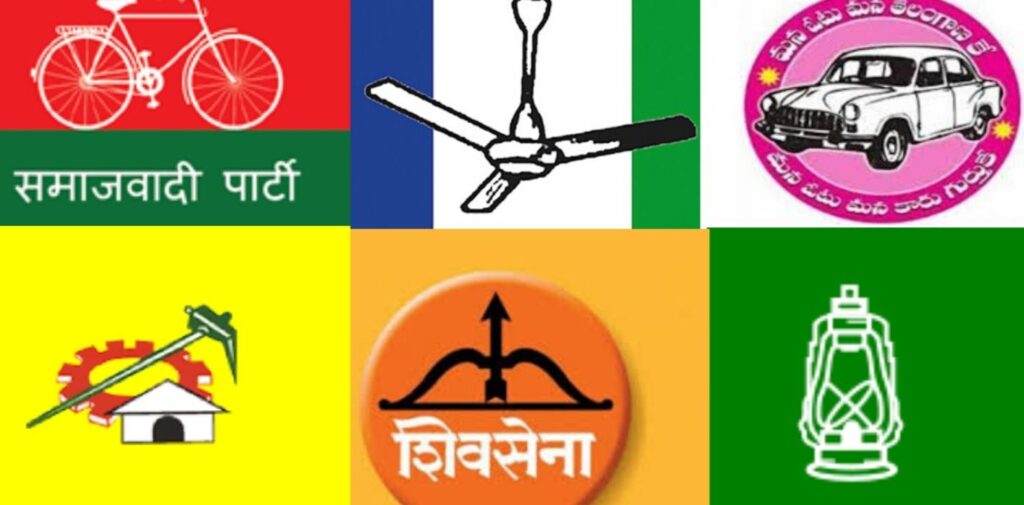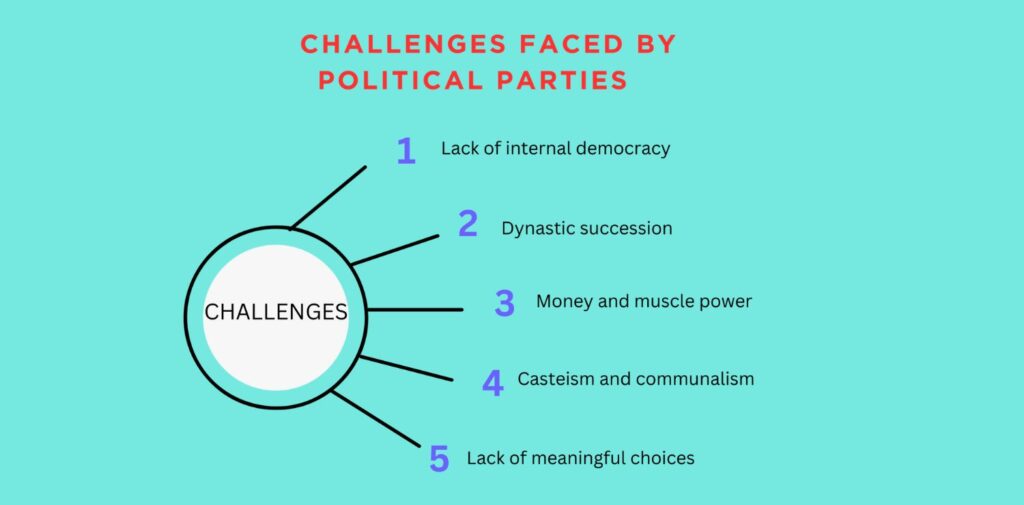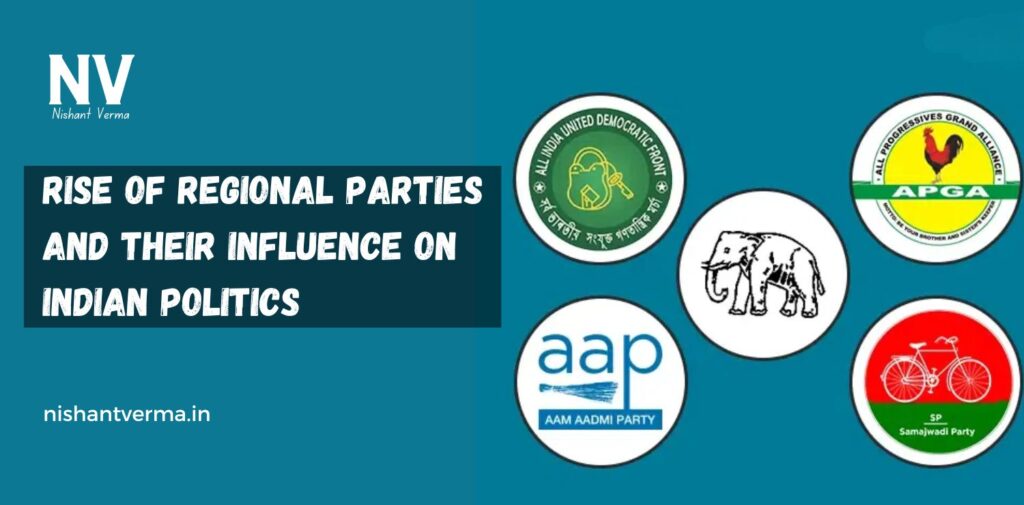India is a vast country, with many different languages, cultures, and traditions. Over the years, the political landscape of India has changed a lot, and one of the most important changes has been the rise of regional parties. These are political parties that focus on the needs and interests of specific regions, states, or communities in India. In this article, we will learn what regional parties are, why they became important, and how they have influenced Indian politics.
What Are Regional Parties?
Regional parties are political parties that mainly focus on the issues of a specific region or state. These parties may not have a presence in the entire country but play a very important role in their own regions. They represent the interests, culture, and needs of people from particular areas, often in states with unique languages, traditions, and problems.
For example, the Shiv Sena in Maharashtra is a regional party that focuses on the needs of the Marathi-speaking people. Similarly, the Trinamool Congress (TMC) is a regional party in West Bengal, and the Dravida Munnetra Kazhagam (DMK) is a regional party in Tamil Nadu.

Why Did Regional Parties Rise?
After India gained independence in 1947, the Congress Party was the main political force in the country. It controlled the central government and had influence over most states. However, over time, people in different regions of India started to feel that their local needs and issues were not being addressed by the central government. There are several reasons why regional parties began to rise:
- Language and Culture: India is a land of many languages and cultures. People wanted political leaders who could understand and represent their unique languages, traditions, and customs. For instance, people in Tamil Nadu wanted a party that could address issues related to Tamil culture and language. Similarly, in Punjab, the people wanted a party that understood their language, Punjabi, and their specific problems.
- State-Specific Issues: Different states in India have their own problems, and regional parties are better placed to understand and solve these local issues. For example, in Kerala, the issues related to agriculture and the welfare of workers are very important. A regional party in Kerala, like the Left Democratic Front (LDF), can focus on these issues more than a national party.
- Political Discontent: Over time, some people felt that the national parties were not doing enough for their region. They were unhappy with the way the central government was handling the development of their states. This led to the rise of regional parties that promised to work specifically for the welfare of their region.

The Growth of Regional Parties in India
The rise of regional parties can be traced back to the 1960s and 1970s. Some of the early examples of strong regional parties include the Dravida Munnetra Kazhagam (DMK) in Tamil Nadu, the Shiromani Akali Dal (SAD) in Punjab, and the Shiv Sena in Maharashtra.
1960s and 1970s: The Early Years
In the 1960s, India was still figuring out its identity after gaining independence. Many people in the southern states, like Tamil Nadu, were unhappy with the dominance of Hindi as the national language. This led to the formation of regional parties like the DMK, which focused on promoting the Tamil language and culture. Similarly, in Punjab, the people wanted more attention to their culture and the issues of the Sikh community. This gave rise to the Shiromani Akali Dal.
1980s and 1990s: The Explosion of Regional Parties
The 1980s and 1990s saw the growth of many regional parties in India. During this period, the Janata Party formed in 1977, which was a coalition of various regional parties. It was one of the first signs that regional parties were becoming more important in national politics. By the 1990s, the Indian National Congress (INC) started losing its dominance, and regional parties took the lead in many states.
For example:
- The Trinamool Congress (TMC), led by Mamata Banerjee, became a major force in West Bengal in the 1990s.
- The Biju Janata Dal (BJD), led by Naveen Patnaik, emerged in Odisha.
- The Samajwadi Party (SP) and Bahujan Samaj Party (BSP) grew in Uttar Pradesh, one of India’s most politically important states.
These parties started winning elections in their regions and playing a key role in shaping the central government as well.
How Do Regional Parties Influence Indian Politics?
Regional parties have had a huge impact on Indian politics. They not only focus on local issues but also influence the formation of governments at the national level. Here are some of the ways in which regional parties influence Indian politics:
- Coalition Governments: In India, it is very rare for one party to win a majority of seats in the central elections. This means that political parties often have to form alliances with others to form a government. Regional parties play a key role in these alliances. For example, the United Progressive Alliance (UPA), which was in power from 2004 to 2014, was a coalition of many regional parties. These parties, like the DMK, TMC, and others, had a significant say in national decision-making.
- Pressure on National Parties: Regional parties can put pressure on national parties to address the needs of their states. For instance, the TMC, when in power in West Bengal, has often pushed the central government to pay more attention to the development of the state. Similarly, the Shiv Sena has raised issues related to the welfare of Marathi-speaking people in Maharashtra.
- Filling the Gaps in National Politics: Sometimes, regional parties provide an alternative voice to the national parties. If the national parties fail to represent the interests of the people in a particular state, regional parties step in. For example, the Aam Aadmi Party (AAP) in Delhi, which started as a regional party, has been successful in addressing local governance issues like corruption and the quality of public services.
- Decentralization of Power: Regional parties have also helped in decentralizing power in India. Earlier, most power was concentrated in the central government in New Delhi. But with the rise of regional parties, many states have become more powerful and independent in making decisions that directly affect their people. This has led to better governance in some states, as the leaders understand local needs better than distant national leaders.

Challenges Faced by Regional Parties
While regional parties have grown in influence, they also face several challenges:
- Lack of National Reach: Most regional parties are limited to their specific regions and struggle to have an influence in other parts of the country. This can limit their ability to expand and become powerful at the national level.
- Internal Conflicts: Many regional parties are led by strong leaders, and when these leaders face internal conflicts or fail to maintain unity within the party, it can weaken the party’s influence.
- Alliances and Conflicts: Sometimes, regional parties have to compromise on their issues when forming alliances with larger parties. This can lead to dissatisfaction among their supporters if they feel that their party is not representing their interests properly.
Conclusion: Rise of Regional Parties
In conclusion, regional parties have played a crucial role in shaping Indian politics. They have given voice to the people of different regions, brought attention to state-specific issues, and influenced the formation of governments at the national level. As India continues to grow and change, regional parties will remain an important force in its political landscape. These parties highlight the diversity of India and show that politics in the country is not just about one central power, but also about representing the unique needs and cultures of different regions.




